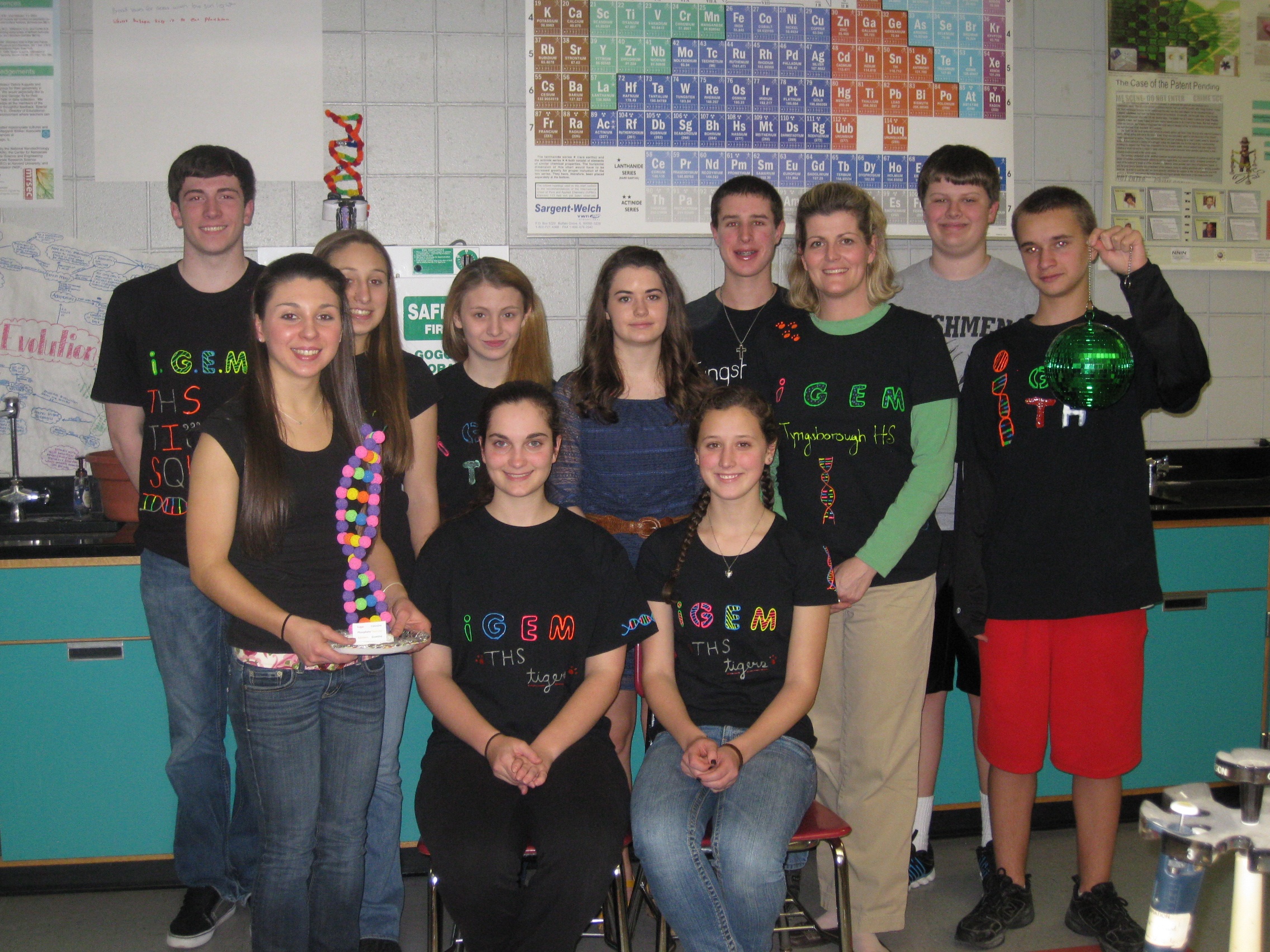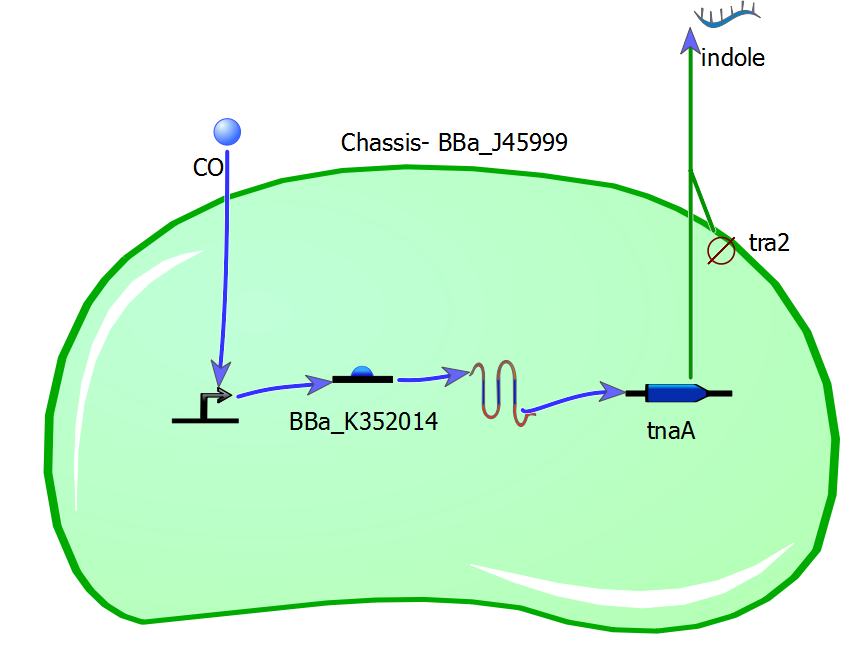Team:Tyngsboro MA Tigers
From 2012hs.igem.org
- a team description
- project description
- safety information (did your team take a safety training course? were you supervised in the lab?)
- team attribution (who did what part of your project?)
- lab notebook
- sponsor information
- other information
Example: 2012hs.igem.org/Team:Tyngsboro_MA_Tigers/Our_Pets
| You can write a background of your team here. Give us a background of your team, the members, etc. Or tell us more about something of your choosing. | |
|
Tell us more about your project. Give us background. Use this as the abstract of your project. Be descriptive but concise (1-2 paragraphs) | File:Tyngsboro MA Tigers team.png Your team picture |
| Team Tyngsboro_MA_Tigers |
| Official Team Profile |
|---|
Contents |
Team
We're the twelve-strong inaugural Tiger Squad at Tyngsborough High School in Tyngsborough, Massachusetts, with a real interest in using our science knowledge to help the community and learn about synthetic biology along the way!
Kathleen Barrett (Liaison)
Mia Pavao (Secretary)
Lizzy Seltz (Lab Manager)
Michael Sheets (Media Specialist)
Elizabeth Barrett (Public Relations)
Madison Vigneault (Treasurer)
Taylor Vigneault (Treasurer)
Project
The Problem:
A colorless, odorless, and soundless killer takes the lives of nearly 2,100 innocent United States citizens every year; that is an average of 3 people every day. CO poisoning is the leading cause of unintentional poisoning deaths in the United States and 1 in every 2,400 people falls victim to CO poisoning. Males are 2.3 times more likely to die from CO poisoning than females and people over the age of 65 have the highest risk of dieing from the silent killer. Only by being aware of the grave danger, and understanding the structure and works of the gas, we can create a circuit giving a scent to CO.
Citation- "Carbon Monoxide Poisoning Statistics." Christensen Law Firm. 03 Sept. 2010. Web. 1 Mar. 2012. [<http://www.utahpersonalinjurylawfirm.com/2010/09/carbon-monoxide-poisoning-statistics/>].
Our Idea:
We are looking to develop a genetic circuit for bacteria that converts the odorless carbon monoxide into a malodorous output. Coupled with the common household detector, we might be able to reduce even further CO-related deaths.
R. rubrum:
Rhodospirillum rubrum is a bacterium that uses carbon monoxide as an energy source. This photosynthetic bacterium can metabolize carbon monoxide in the reaction: CO + H2O --> CO2 + H2
The enzyme carbon monoxide dehydrogenase (CODH) is a peripheral membrane protein that carries out the primary oxidation of CO to CO2 and then passes the products through a ferredoxin-like sub-unit. R. rubrum also has a carbon monoxide-sensing protein called CooA that activates the gene expression of oxidation enzymes. In our research on R. rubrum, we found that a Turkey iGEM team in the 2010 college division developed CooA and CooA-responsive promoter biobricks they wanted make to transform into E. coli. They were able to successfully build these parts, and now our goal is to try and put them into our own genetic circuit that, in the presence of carbon monoxide, will output an unpleasant warning smell.
Notebook
Finding Our Idea
Creating the Genetic Circuit Once we had our idea solidified, the next step was coming up with a circuit to make our idea into a reality. Using the [http://www.tinkercell.com/ TinkerCell] program to create an example of the cell, we wanted to follow the KISS rule and keep things as simple as possible. The [https://2010.igem.org/Team:METU_Turkey/Team 2010 METU iGEM team] created a [http://partsregistry.org/wiki/index.php?title=Part:BBa_K352014 part] that successfully detected carbon monoxide, and contained a Lacl promoter, RBS, and CooA, but from that point what the output was seemed to be fairly open for change. We wanted the output smell to be very unpleasant and trigger a negative response, and decided indole, the smell naturally made by e. coli, would be an excellent choice. We chose tnaA, the indole producing gene, as the last major step in our genetic sequence, and an [http://partsregistry.org/wiki/index.php?title=Part:BBa_J45999 odorless chassis] so that indole wouldn't be naturally produced by the detector. Obstacles in creating the circuit were finding a tnaA producing gene (still working on that) and... The parts chosen were all marked as 'working' in the parts registry, and most had the same assembly methods, making them compatible. Our major concerns are that we won't be able to find a tnaA gene by itself, or that the parts chosen won't work be compatible in practice. Also, special thanks go out to our iGEM adviser, Alyssa Henning! Fundraising
Results/Conclusions
What did you achieve over the course of your semester?
Safety
File:Safety Contract-1.pdf What safety precautions did your team take? Did you take a safety training course? Were you supervised at all times in the lab?
Attributions
Who worked on what?
Human Practices
What impact does/will your project have on the public?
Fun!
What was your favorite team snack?? Have a picture of your team mascot?
<forum_subtle />
 "
"

